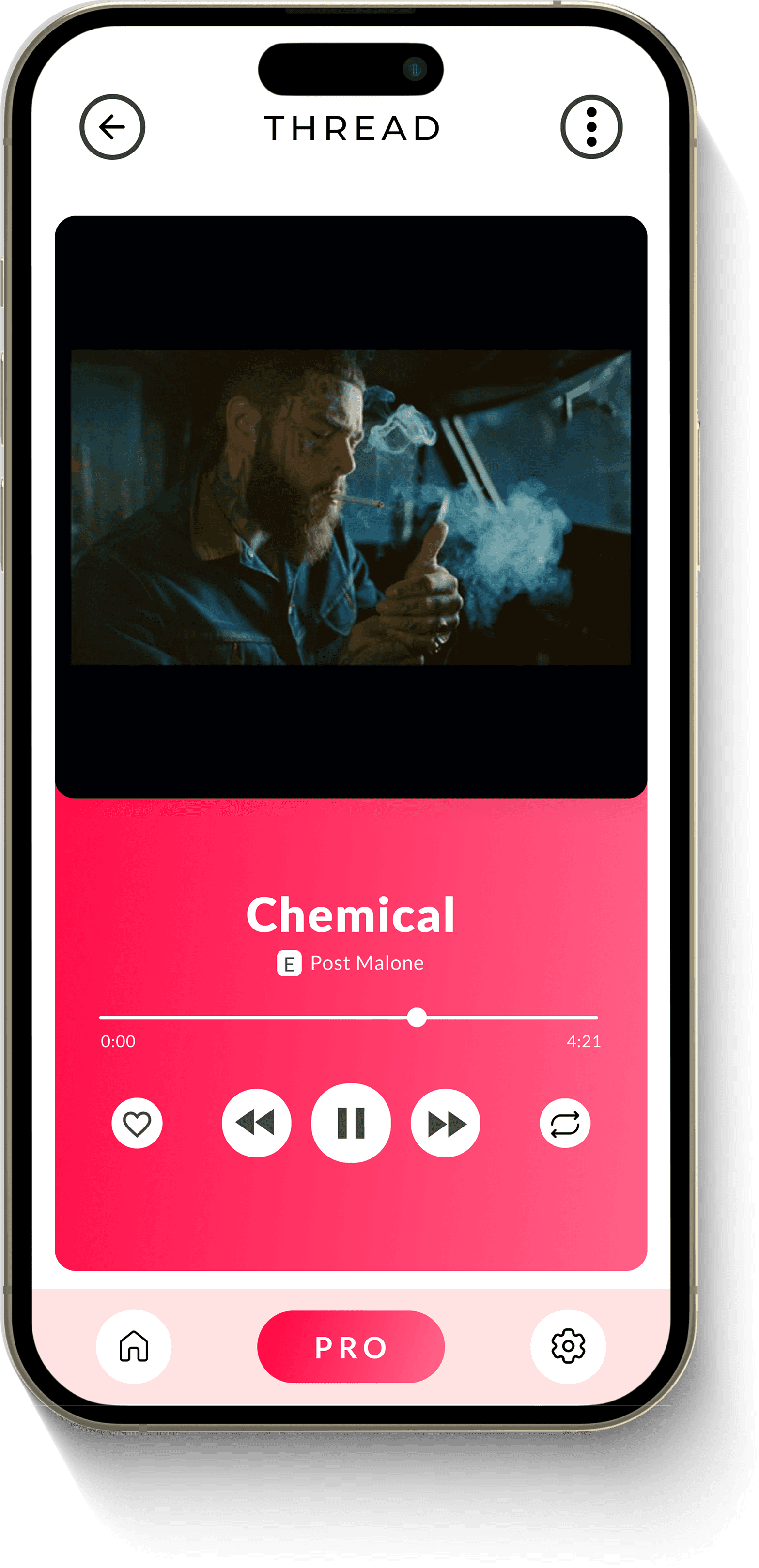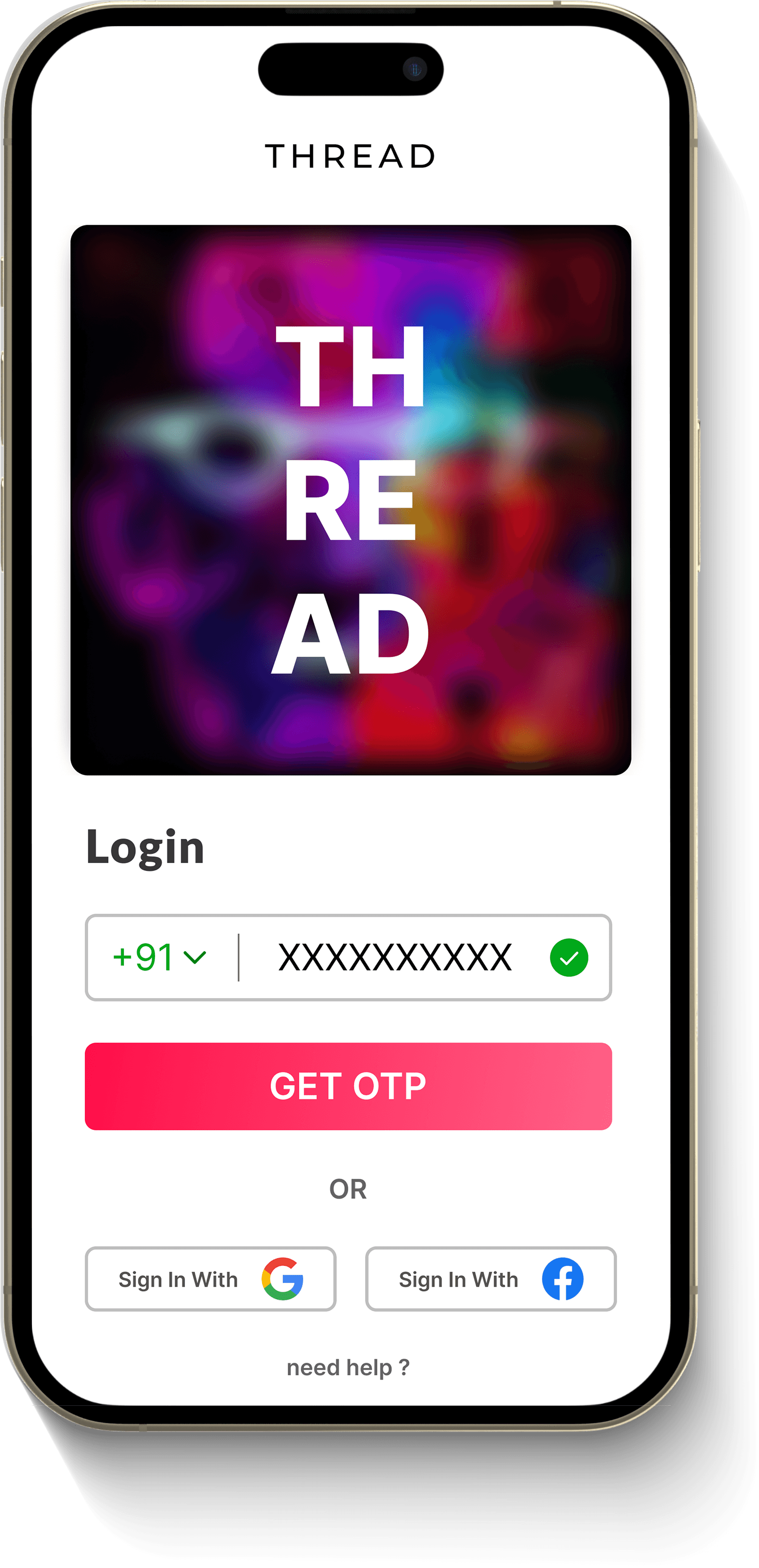Problem Statement
The problem statement should be further detailed by identifying specific pain points and challenges experienced by the target audience.
Slow and frustrating music discovery.
Difficulty in managing playlists.
Limited access to affordable, high-quality music.
A cluttered user interface that affects usability.
Problem Statement
The problem statement should be further detailed by identifying specific pain points and challenges experienced by the target audience.
Slow and frustrating music discovery.
Difficulty in managing playlists.
Limited access to affordable, high-quality music.
A cluttered user interface that affects usability.
Objectives and Goals
Increase user engagement by 20% within the first year.
Retain 80% of users after the first three months.
Achieve a 4-star or higher rating on app stores within six months.
Launch the app within a 12-month timeframe.
Objectives and Goals
Increase user engagement by 20% within the first year.
Retain 80% of users after the first three months.
Achieve a 4-star or higher rating on app stores within six months.
Launch the app within a 12-month timeframe.
Design Process

Discover

Define

Ideate

Design
Design Process

Discover

Define

Ideate

Design
Business Challenges
We Detail the business challenges by examining financial constraints and market dynamics.
Limited budget for licensing music content.
The dominance of established competitors like Spotify and Apple Music.
Monetization strategies in the freemium model to compete with more prominent players.
Business Challenges
We Detail the business challenges by examining financial constraints and market dynamics.
Limited budget for licensing music content.
The dominance of established competitors like Spotify and Apple Music.
Monetization strategies in the freemium model to compete with more prominent players.
Product Users
Our target audience is budget-conscious music enthusiasts. Here's a more comprehensive breakdown of the user demographic and their characteristics :
User Segment 1: College Students
Age: Typically between 18 and 25.
Characteristics: College students are often on tight budgets, seeking affordable entertainment options. They may be studying or working part-time jobs while pursuing their education. Convenience is essential to them, as they often listen to music while studying or during breaks.
Behavior: They may prioritize affordable subscription plans and might actively look for student discounts. Personalization is key for them, as they may have diverse music tastes.
User Segment 2: Young Professionals
Age: Aged 25 to 35.
Characteristics: Young professionals are cost-conscious but have slightly more disposable income than students. They value music for relaxation and during commutes or workouts. They might appreciate a music app that caters to their specific needs.
Behavior: They may be willing to invest in mid-tier subscription plans. Recommendations and playlists tailored to different moods and activities are appealing to this group.
User Segment 3: Families
Age: A wide range, from parents to children.
Characteristics: Families often share a music streaming subscription. Parents seek budget-friendly options, while children want access to a variety of music. Usability and parental controls are essential for this segment.
Behavior: A family-oriented subscription plan with multiple user profiles is attractive to this group.
User Segment 4: Music Enthusiasts
Age: Varied, but primarily adults.
Characteristics: Music enthusiasts are passionate about music and have diverse tastes. They may have an extensive music collection and appreciate discovering new artists and tracks.
Behavior: These users are willing to pay for premium features like exclusive content, high-quality audio, and early access to new releases.
User Segment 5: Seniors
Age: Typically aged 65 and above.
Characteristics: Seniors enjoy music for relaxation, reminiscence, and entertainment. Many are on fixed incomes, so affordability is crucial.
Behavior: They often prefer straightforward, easy-to-use interfaces and might appreciate features like larger text and simplified controls.
Product Users
Our target audience is budget-conscious music enthusiasts. Here's a more comprehensive breakdown of the user demographic and their characteristics :
User Segment 1: College Students
Age: Typically between 18 and 25.
Characteristics: College students are often on tight budgets, seeking affordable entertainment options. They may be studying or working part-time jobs while pursuing their education. Convenience is essential to them, as they often listen to music while studying or during breaks.
Behavior: They may prioritize affordable subscription plans and might actively look for student discounts. Personalization is key for them, as they may have diverse music tastes.
User Segment 2: Young Professionals
Age: Aged 25 to 35.
Characteristics: Young professionals are cost-conscious but have slightly more disposable income than students. They value music for relaxation and during commutes or workouts. They might appreciate a music app that caters to their specific needs.
Behavior: They may be willing to invest in mid-tier subscription plans. Recommendations and playlists tailored to different moods and activities are appealing to this group.
User Segment 3: Families
Age: A wide range, from parents to children.
Characteristics: Families often share a music streaming subscription. Parents seek budget-friendly options, while children want access to a variety of music. Usability and parental controls are essential for this segment.
Behavior: A family-oriented subscription plan with multiple user profiles is attractive to this group.
User Segment 4: Music Enthusiasts
Age: Varied, but primarily adults.
Characteristics: Music enthusiasts are passionate about music and have diverse tastes. They may have an extensive music collection and appreciate discovering new artists and tracks.
Behavior: These users are willing to pay for premium features like exclusive content, high-quality audio, and early access to new releases.
User Segment 5: Seniors
Age: Typically aged 65 and above.
Characteristics: Seniors enjoy music for relaxation, reminiscence, and entertainment. Many are on fixed incomes, so affordability is crucial.
Behavior: They often prefer straightforward, easy-to-use interfaces and might appreciate features like larger text and simplified controls.
Competitor Analysis
Competitor analysis is the process of researching and assessing the strengths and weaknesses of rival companies in the same industry or market.
Identify Key Competitors :
We List the major players in the music streaming industry, including Spotify, Apple Music, Amazon Music, Deezer, and any local or niche competitors.
We Categorize competitors based on their market share, target audience, and unique selling points.
Evaluate User Experience:
We Analyze the user interface and experience of each competitor's app and also pay attention to the layout, navigation, ease of use, and responsiveness.
We Consider the availability of mobile apps, desktop apps, and compatibility with various devices.
Review User Reviews and Ratings:
We Explore user reviews and ratings on app stores and review platforms. Look for common complaints and areas where competitors excel.
Competitor Analysis
Competitor analysis is the process of researching and assessing the strengths and weaknesses of rival companies in the same industry or market.
Identify Key Competitors :
We List the major players in the music streaming industry, including Spotify, Apple Music, Amazon Music, Deezer, and any local or niche competitors.
We Categorize competitors based on their market share, target audience, and unique selling points.
Evaluate User Experience:
We Analyze the user interface and experience of each competitor's app and also pay attention to the layout, navigation, ease of use, and responsiveness.
We Consider the availability of mobile apps, desktop apps, and compatibility with various devices.
Review User Reviews and Ratings:
We Explore user reviews and ratings on app stores and review platforms. Look for common complaints and areas where competitors excel.
Root Cause Analysis
Root Cause Analysis is a systematic process to identify the underlying reasons for problems or issues.
Problem : Limited Content Accessibility
Cause 1 : Licensing Restrictions
Sub-Cause : High Licensing Fees
Root Cause : Major Record Labels Demand High Fees For Music Licensing.
Solution : We Explore alternative sources of music content, such as independent artists or emerging musicians, who may offer more affordable licensing options.
Root Cause : Lack of negotiation leverage due to the app's small market presence.
Solution : We Build partnerships and collaborations with smaller, independent record labels to access their music libraries at more affordable rates.
Sub Cause : Exclusive Agreements.
Root Cause : Exclusive Deals with Competitors Prevent Access to Certain Artist's Music.
Solution : Negotiate non-exclusive agreements or seek partnerships with artists who aren't locked into exclusivity contracts.
Root Cause Analysis
Root Cause Analysis is a systematic process to identify the underlying reasons for problems or issues.
Problem : Limited Content Accessibility
Cause 1 : Licensing Restrictions
Sub-Cause : High Licensing Fees
Root Cause : Major Record Labels Demand High Fees For Music Licensing.
Solution : We Explore alternative sources of music content, such as independent artists or emerging musicians, who may offer more affordable licensing options.
Root Cause : Lack of negotiation leverage due to the app's small market presence.
Solution : We Build partnerships and collaborations with smaller, independent record labels to access their music libraries at more affordable rates.
Sub Cause : Exclusive Agreements.
Root Cause : Exclusive Deals with Competitors Prevent Access to Certain Artist's Music.
Solution : Negotiate non-exclusive agreements or seek partnerships with artists who aren't locked into exclusivity contracts.




Sarah Thompson
Student
Goals
Enjoy music while studying and working.
Save money wherever possible.
Discover new music and stay updated with the latest trends.
Challenges
Limited budget for entertainment expenses.
Busy schedule with classes and work.
Difficulty in finding time to explore new music.
Behaviors
Uses music as a focus aid during study sessions.
Listens to music during her commute to college and work.
Often relies on friends recommendations for new music.
Expectations
Affordable subscription options for college students.
A simple and intuitive interface that doesn't require extensive searching.
Personalized playlists and music recommendations to discover new tracks effortlessly.


Sarah Thompson
Student
Goals
Enjoy music while studying and working.
Save money wherever possible.
Discover new music and stay updated with the latest trends.
Challenges
Limited budget for entertainment expenses.
Busy schedule with classes and work.
Difficulty in finding time to explore new music.
Behaviors
Uses music as a focus aid during study sessions.
Listens to music during her commute to college and work.
Often relies on friends recommendations for new music.
Expectations
Affordable subscription options for college students.
A simple and intuitive interface that doesn't require extensive searching.
Personalized playlists and music recommendations to discover new tracks effortlessly.
Task Flows
Task flows are visual representations of how users interact with an application or system to achieve specific goals or tasks.
Task 1 : Onboarding Flow for New User.
Objective : To guide new users through the registration and initial setup process.


Task 1 : Discovering and Playing a New Song.
Objective : To guide users through the process of discovering and playing a new song.


Task Flows
Task flows are visual representations of how users interact with an application or system to achieve specific goals or tasks.
Task 1 : Onboarding Flow for New User.
Objective : To guide new users through the registration and initial setup process.

Task 1 : Discovering and Playing a New Song.
Objective : To guide users through the process of discovering and playing a new song.

low Fidelity Wireframe




low Fidelity Wireframe


High Fidelity Wireframe
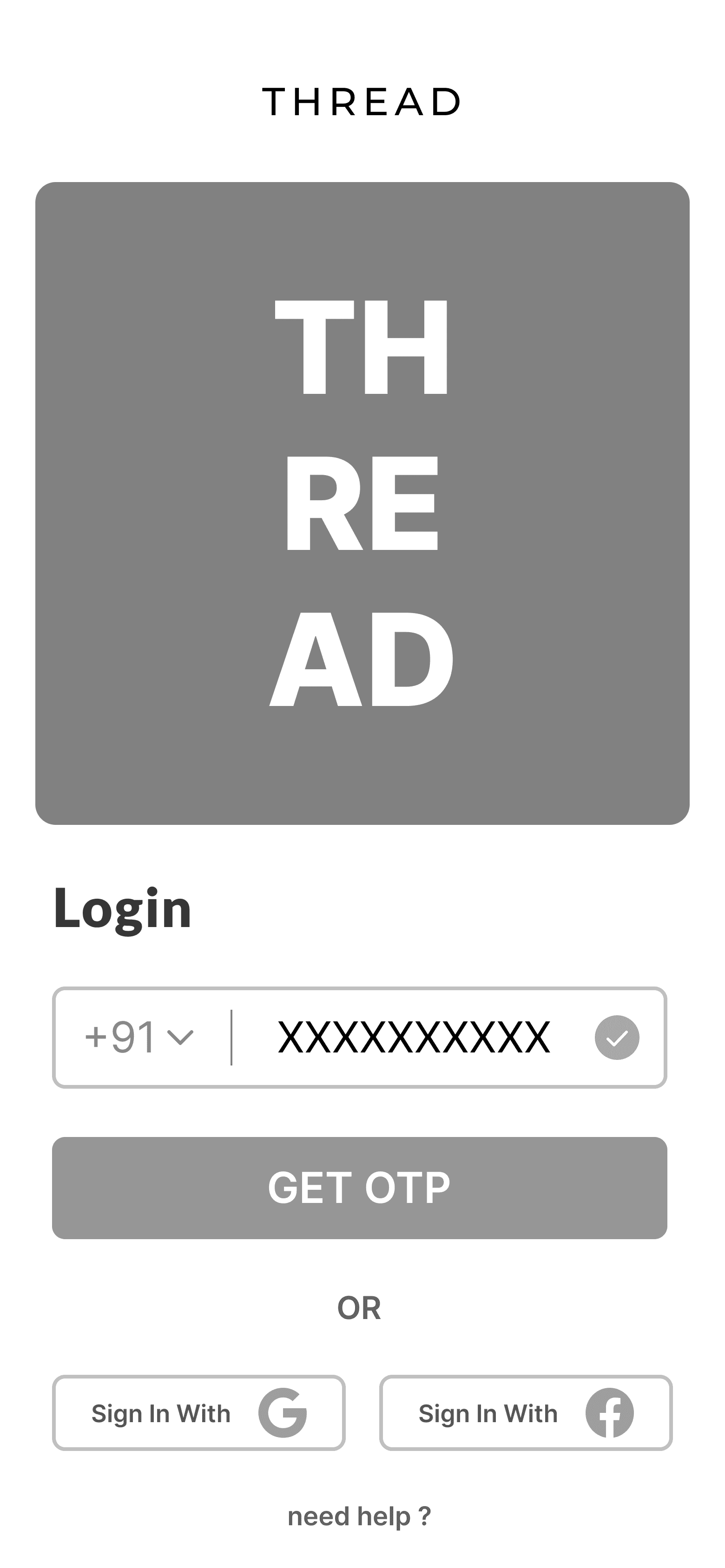

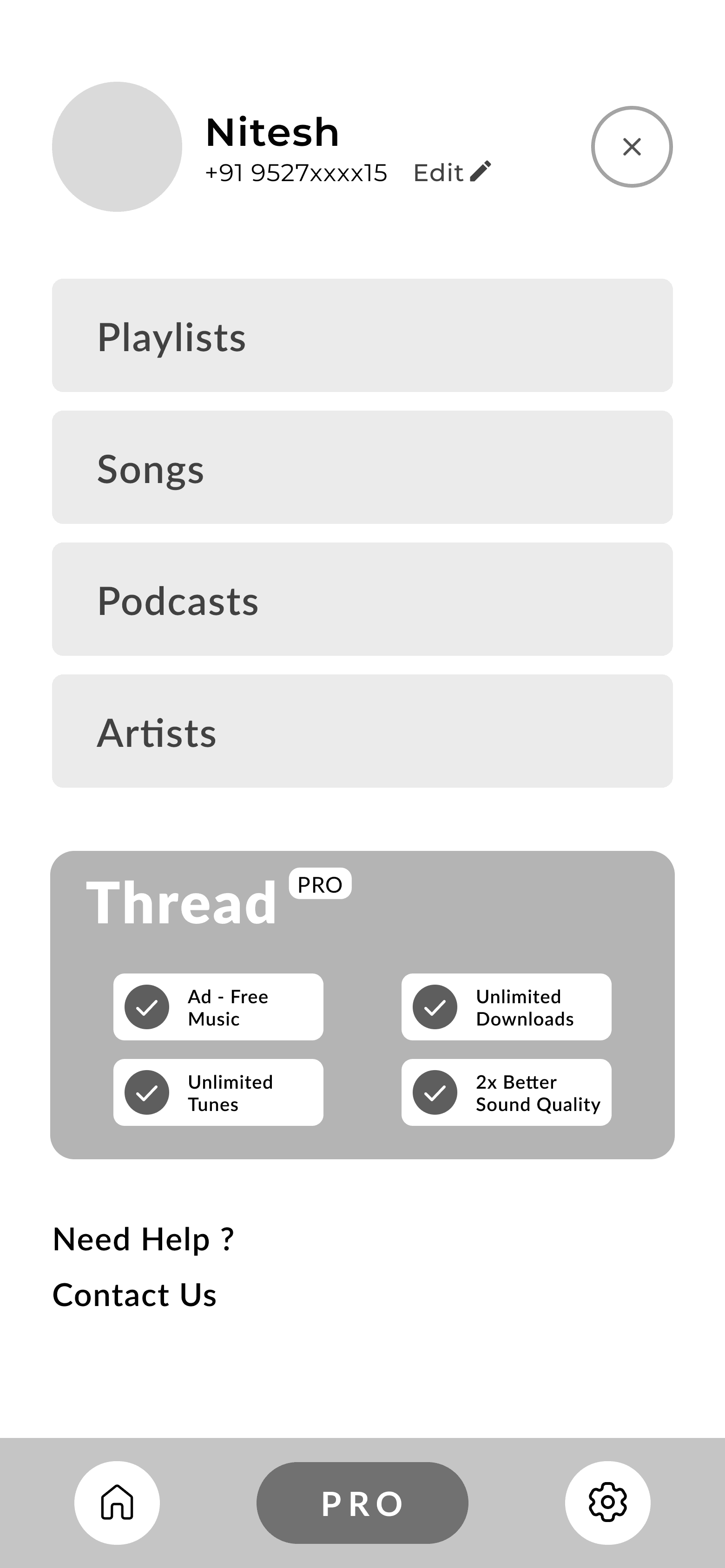

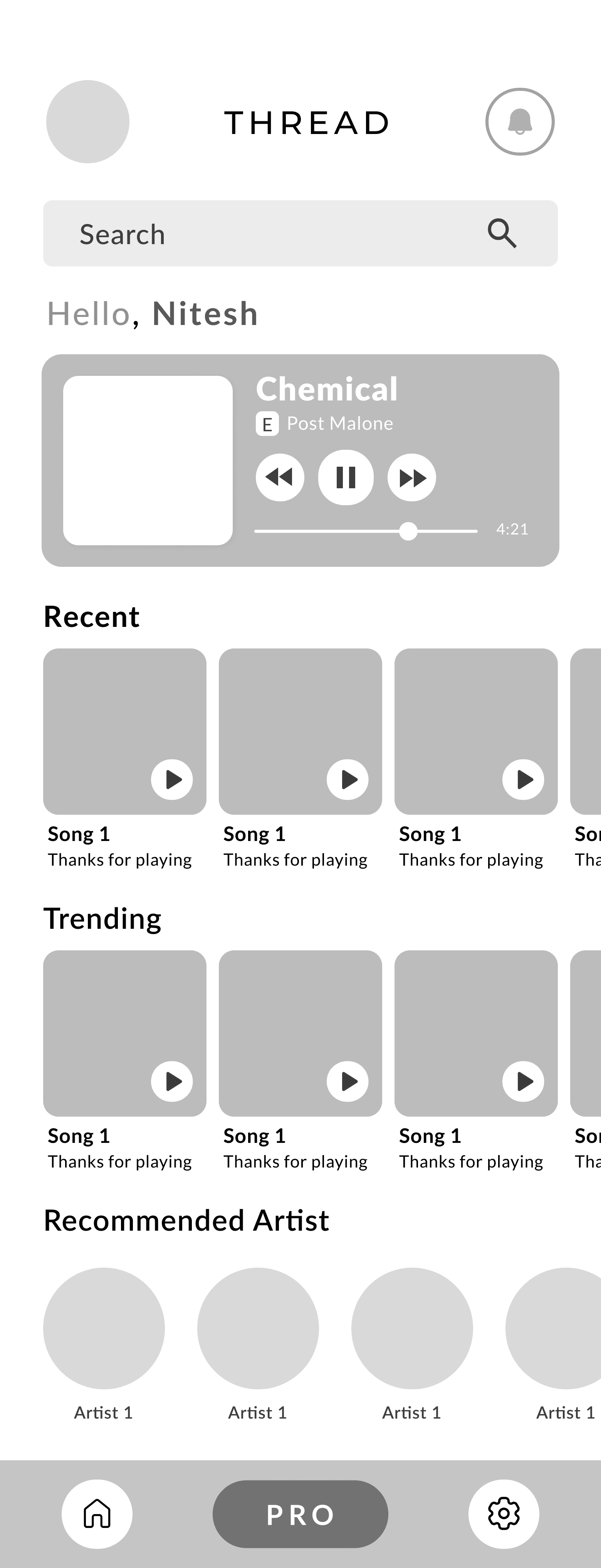

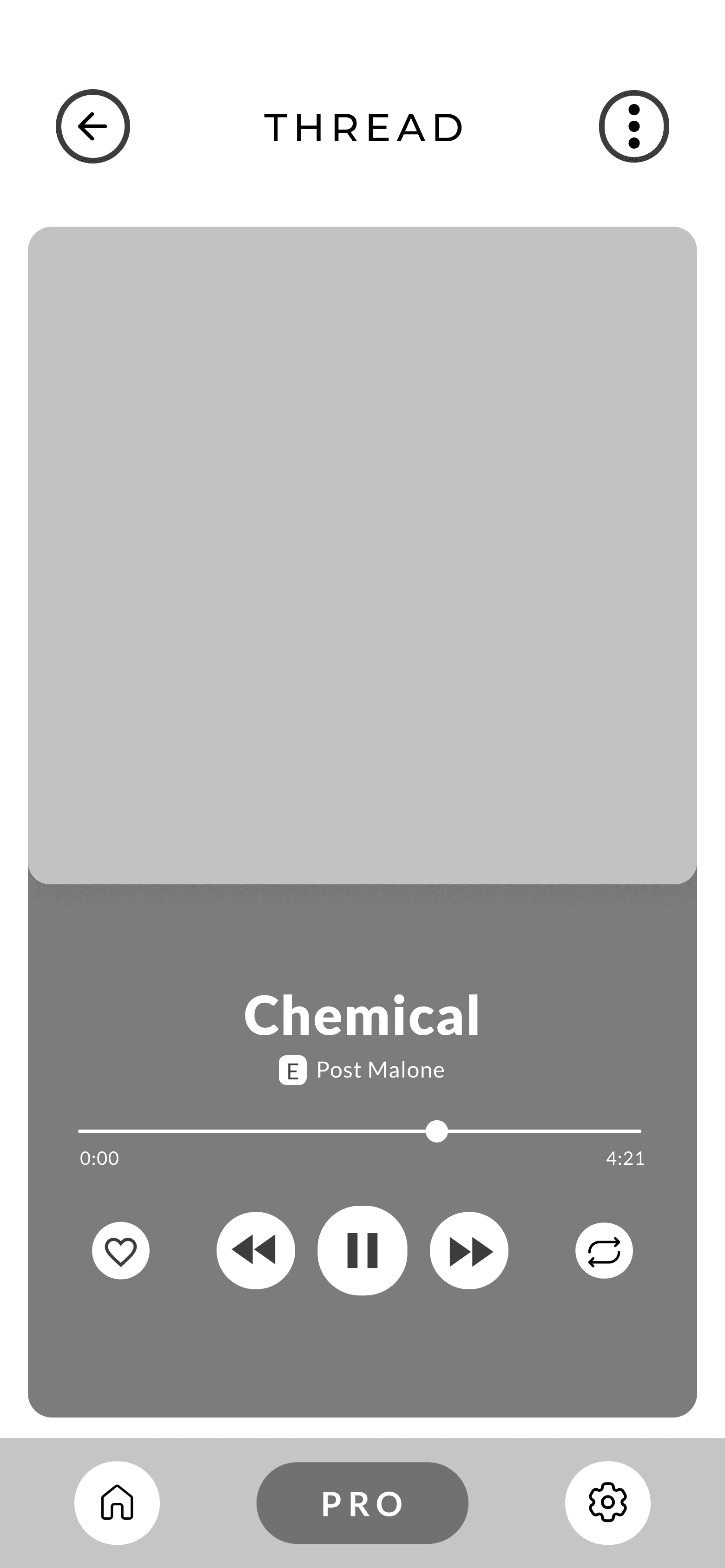

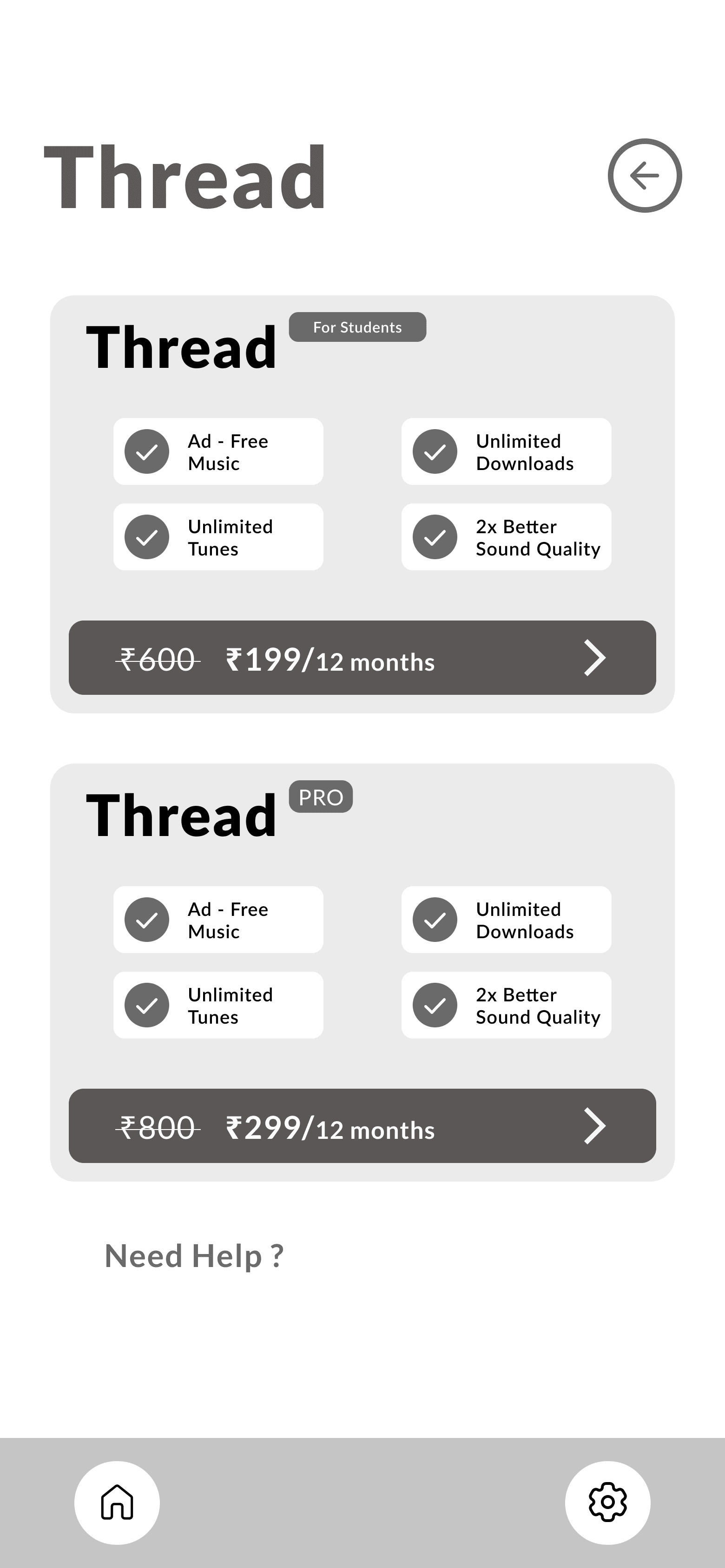

High Fidelity Wireframe





Usability Testing
Continuously test the design with real users to identify and address any usability issues. Make iterative improvements based on feedback.
Usability Testing
Continuously test the design with real users to identify and address any usability issues. Make iterative improvements based on feedback.
Visual Design
Colors and Gradient
Primary Color
Secondary Colors
Gradient
Typography
Primary Font
aa
Lato
aa
Lato (bold)
aa
Lato (extra bold)
Secondary Font
aa
Montserrat
Visual Design
Colors and Gradient
Primary Color
Secondary Colors
Gradient
Typography
Primary Font
aa
Lato
aa
Lato (bold)
aa
Lato (extra bold)
Secondary Font
aa
Montserrat






